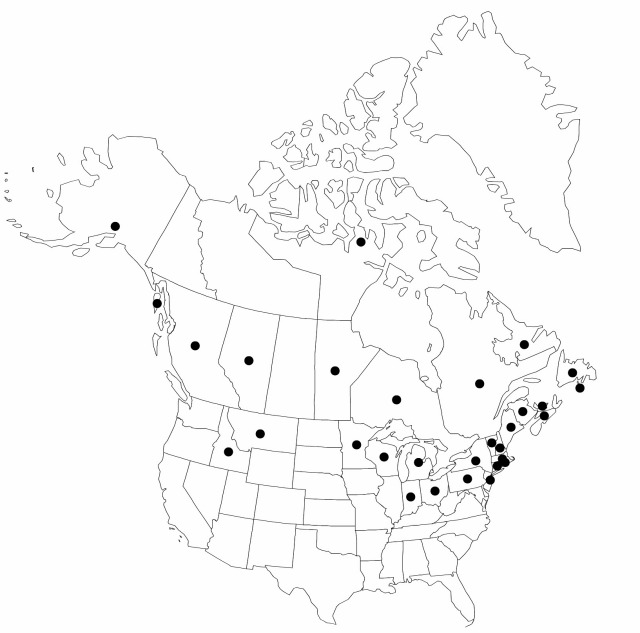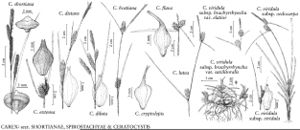Carex flava
Sp. Pl. 2: 975. 1753.
Plants cespitose. Culms straight, 10–75 cm. Leaves of flowering stems shorter than to slightly exceeding culms, 5–30 cm × 1.6–4.7(–5.8) mm; ligules on distal cauline leaves truncate or rounded. Inflorescences: peduncles of terminal spikes 0.4–5(–9) mm; bracts to 18.5 cm × (0.7–)2–4.5 mm; inner band of sheaths truncate or concave. Spikes: proximal pistillate spikes (1–)2–5, contiguous or approximate, globose to elliptic, 8–22 × 7.5–12.7 mm; terminal staminate spikes sessile or pedunculate, 9–22 × 1.1–3 mm. Scales: pistillate scales reddish brown, 2.3–3.9 × 0.9–1.4 mm; staminate scales reddish brown, ovate, margins narrowly whitish hyaline, apex obtuse. Anthers 1–2.1 mm. Perigynia reflexed, bright yellow at maturity, 4–6.3 × 1–1.9 mm, apex gradually narrowed; beak 1.3–2.7 mm, forming angle of (15–)26–72° with body, scabrous. Achenes 1.3–1.7 × 0.9–1.2 mm. 2n = 60.
Phenology: Fruiting Jun–Aug.
Habitat: Moist to wet habitats, such as open meadows, fens, partially shaded shrub carrs, swamps, on lime-rich soils
Elevation: 0–2000 m
Distribution

St. Pierre and Miquelon, Alta., B.C., Man., N.B., Nfld. and Labr., N.S., Nunavut, Ont., P.E.I., Que., Alaska, Conn., Idaho, Ind., Maine, Mass., Mich., Minn., Mont., N.H., N.J., N.Y., Ohio, Pa., R.I., Vt., Wis., Europe, Asia (Iran).
Discussion
Selected References
None.
